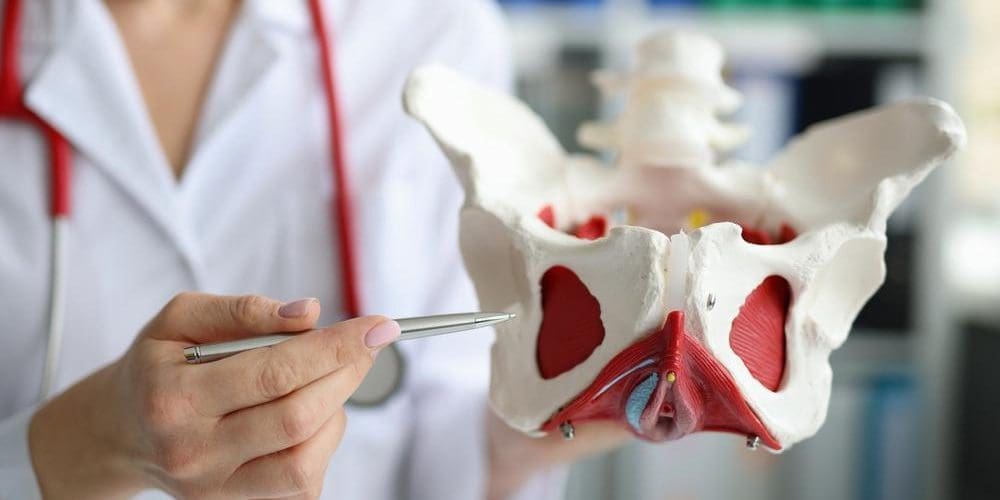
Pelvic girdle pain is common during pregnancy but can also affect people at other times. Chiropractic care is one of the safest and most effective options for treating pelvic girdle pain. Not only does it correct some of the issues contributing to the pain, but it also promotes overall health and well-being and can prepare your body for labor and delivery.
What should you know about using chiropractic care to alleviate pelvic girdle pain?
Pelvic girdle pain occurs in the joints at the front and back of the pelvic girdle. You feel the pain in your tummy, hips, lower back, and pubic bone. It’s most common during pregnancy because of how pregnancy hormones affect the ligaments. As the fetus grows with pregnancy, your posture and center of gravity change, putting additional strain on your pelvic joints and stretching and weakening your abdominal muscles.

You likely have pelvic girdle pain if you experience:
About a quarter to a third of pregnant women experience pelvic girdle pain. However, pregnancy isn’t the only cause of this type of pain, and both men and women can experience this pain.
The most common cause of pelvic girdle pain is pregnancy.
Pregnancy causes your body to produce relaxin, which causes the ligaments in your left and right pelvic bone joints to relax. Your body typically begins producing this hormone about ten weeks into pregnancy.
When these ligaments loosen, it allows the pelvic joint to move around more, which allows your pelvic bones to widen. This is excellent news for the delivery of your baby, but it can cause chronic pelvic pain leading up to labor and in the weeks following delivery.
Several risks factors can lead to PGP, including:
Pelvic girdle pain is common during pregnancy because the hormonal changes that occur during pregnancy affect the tendons around your pelvis. It makes labor and delivery possible by allowing the baby to pass through the birth canal. However, it causes discomfort before and after pregnancy.
You can reduce the risk of developing pelvic girdle pain during pregnancy by doing everything possible to improve musculoskeletal health. The stronger and toned your muscles are as your body begins changing, the less risk you have of developing this type of chronic pelvic pain. Your risk increases if you have a history of lower back or pelvic pain, even when you aren’t pregnant.
Most cases of pelvic girdle pain ease up after the first three months after delivery.
Chiropractic care can help you manage pelvic girdle pain and heal faster after delivery.
Maintaining good posture and getting plenty of rest are two of the best things you can do if you’re experiencing this type of pain. Chiropractic care can help you improve your posture and sleep better during and after pregnancy.

You can also do several chiropractic exercises in the office or at home that help improve pelvic girdle pain.
Additionally, massage and optimal spinal alignment improve pelvic girdle pain. Alignment of the spine ensures proper sitting and allows your body to move as intended. Massage eases existing pain and helps your muscles loosen up so you have a better range of motion and can move more comfortably. Usually, massage of the lower back, buttocks, and outer thighs is most helpful for relieving pelvic girdle pain.
Chiropractic care targets the root cause of the problem. It doesn’t just involve manual chiropractic adjustment, an essential part of treatment. Manual therapy for pelvic girdle pain treatment includes adjustments to the pubic symphysis, the sacroiliac joint, and the lumbar and thoracic spine.
In addition to the chiropractic adjustment, other techniques used by chiropractors for pelvic girdle pain treatment include:
Chiropractic care offers a variety of benefits when it comes to treating pelvic girdle pain. It’s gentle and drug-free, which is always beneficial but especially helpful during pregnancy. It also focuses on improving overall health and not just targeting the one specific problem causing pain.
In addition to relieving the pain, it helps your body prepare for labor if your pelvic girdle pain is linked to pregnancy.
Chiropractors address the leading cause of pain. So many other approaches just try to mask the pain, but chiropractic care fixes the root cause of the issue. People experiencing extreme cases of pelvic girdle pain could be faced with the need for invasive medical treatments, including surgery. Using chiropractic care to correct the issues that contribute to pelvic girdle pain means you can avoid high-risk medical treatments and, if you’re pregnant, putting your baby at risk from many of the allopathic treatment options.
You can do several things at home to relieve pelvic girdle pain. These exercises protect the pelvis, preventing the issue, and helping avoid aggravating pelvic girdle pain.
Other self-care practices for managing pelvic pain include:
In addition to these tips for easing pelvic girdle pain during pregnancy, it’s also important to maintain a healthy weight. You and your chiropractor can work together to create a nutrition and fitness program that can assist you in reaching a healthy body mass index, reducing your risk of developing or worsening pelvic girdle pain.
You can do a few exercises at home to relieve PGP pain. These include:
It’s a good idea to work with your chiropractor to ensure proper form when doing these exercises on your own.

Pelvic girdle pain can be extremely painful, making pregnancy and daily life difficult. The good news is there are several things you can do to reduce your risk of developing pelvic girdle pain. And should it develop, there are several things you can do to treat the problem, including chiropractic care.

© Accident Care Chiropractic | Hablamos Español
Located in: North Portland, NE Portland, SE Portland, Gresham, Clackamas, Oregon City, Hillsboro, Bethany, Beaverton, Tigard, Forest Grove, Woodburn,
McMinnville, Keizer, Salem, South Salem, Bend, Springfield, Vancouver, Hazel Dell, East Vancouver, Pasco, Kennewick, Lakewood.
We Specialize in Car Accident Treatment & Recovery
Home | About Us | Testimonials | Blog | Sitemap | Privacy Policy | Services | Locations | Contact Us